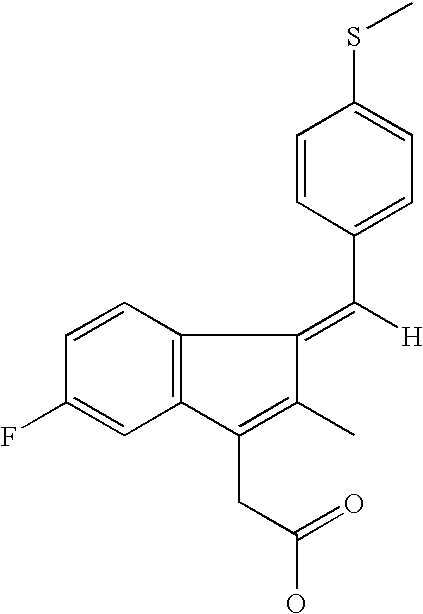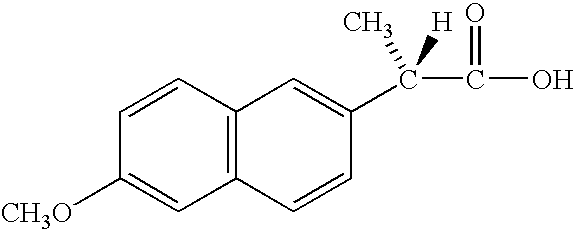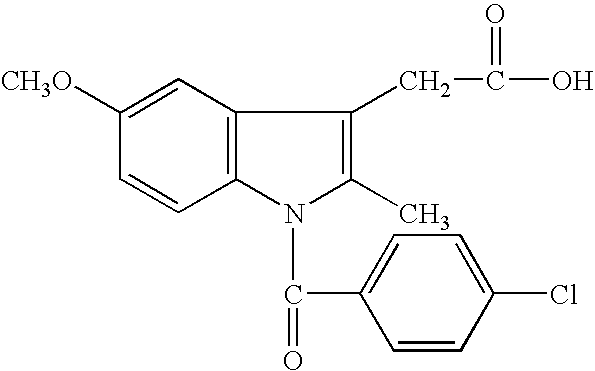Compounds and methods for identifying compounds which inhibit a new class of aspartyl proteases
a technology of aspartyl protease and compounds, applied in the field of compounds, to achieve the effect of inhibiting the cleavage activity
- Summary
- Abstract
- Description
- Claims
- Application Information
AI Technical Summary
Benefits of technology
Problems solved by technology
Method used
Image
Examples
example 1
Membrane Preparation
[0041] Membrane preparation protocol was adapted from the cell fractionation protocol described by Pfau (1998. J. Bact. 180(17):4724-33). Overnight cultures were placed on ice for 20 minutes, then pelleted at 5000×g for 10 minutes. The cell pellet was resuspended in 1 ml 200 mM Tris pH 8.0 to which 1 ml 50 mM Tris pH 8.0, 1 M sucrose, 2 ml water, 20 μl 0.5 M EDTA, and 20 μl lysozyme (10 mg / ml) were added. The cell suspension was allowed to incubate on ice for 30 minutes. Then, 100 μl 1 M MgSO4 was added and the suspension was pelleted at 5000×g for 10 minutes. The cell pellet was resuspended in 5 ml 50 mM Tris pH 8.0, sonicated 3 times for 15 seconds, and centrifuged at 5000×g for 10 minutes. The supernatant was then centrifuged at 230,000×g for 15 minutes. The resulting pellet, which contained the total membrane fraction was resuspended in 200 μl 50 mM Tris pH 8.0.
example 2
TcpA Prepilin Quantitation
[0042] Membrane preparations were made from overnight cultures at 42 C of the E. coli K38 that does not express TcpA and E. coli K38 p3Z-A, pGP1-2 which overexpresses TcpA prepilin. P3Z-A provides tcpA under the control of a T7 promoter, and GP1-2 provides the heat-inducible T7 RNA polymerase that drives transcription of the tcpA on p3Z-A. Then, 20 μl of the membrane preparation of K38 and K38 p3Z-A, pGP1-2 along with 3 μg of trypsin were subjected to electrophoresis on a 12.5% SDS-PAGE gel followed by staining with Coomassie Blue. The stained gel was dried using the NOVEX gel drying system. The dried gel was scanned by a Molecular Dynamics Personal Densitometer SI and the densitometry analysis was performed using ImageQuant version 1.2. The volume of the 3 μg trypsin band, the TcpA prepilin band, the corresponding location of the TcpA prepilin band in the TcpA negative control lane (K38), and an approximately 28 kDa band from both K38 and K39 p3Z-A, pGP1-...
example 3
[0043] A membrane preparation from the E. coli strain K38 p3Z-A, pGP1-2, which was determined to contain 0.2 μg TcpA prepilin / μl, was the source of prepilin in the in vitro TcpJ proteases assay instead of purified prepilin. A membrane preparation of the TcpJ-expressing strain JM109, pCL9, both wild-type and mutant alleles, was the source of the wild-type and mutant TcpJ protein for the in vitro cleavage reactions. The 100 μl processing reaction is performed by combining a 50 μl substrate fraction with a 50 μl enzyme fraction and incubating at 37° C. for 1 hour. The substrate fraction was prepared by combining 5 μl of the TcpA-containing membrane preparation (1 μg TcpA), 10 μl 0.5% w / v cardiolipin, 20 μl of 2× assay buffer (125 mM triethanolamine HCl pH 7.5, 2.5% v / v Triton-X-100), and brought up to the total volume with water. The enzyme fraction was prepared by combining varying volumes of TcpJ-containing membrane preparation and water to bring the volume to...
PUM
| Property | Measurement | Unit |
|---|---|---|
| pH | aaaaa | aaaaa |
| aspartic acid | aaaaa | aaaaa |
| aspartic acid residues | aaaaa | aaaaa |
Abstract
Description
Claims
Application Information
 Login to View More
Login to View More - R&D
- Intellectual Property
- Life Sciences
- Materials
- Tech Scout
- Unparalleled Data Quality
- Higher Quality Content
- 60% Fewer Hallucinations
Browse by: Latest US Patents, China's latest patents, Technical Efficacy Thesaurus, Application Domain, Technology Topic, Popular Technical Reports.
© 2025 PatSnap. All rights reserved.Legal|Privacy policy|Modern Slavery Act Transparency Statement|Sitemap|About US| Contact US: help@patsnap.com



